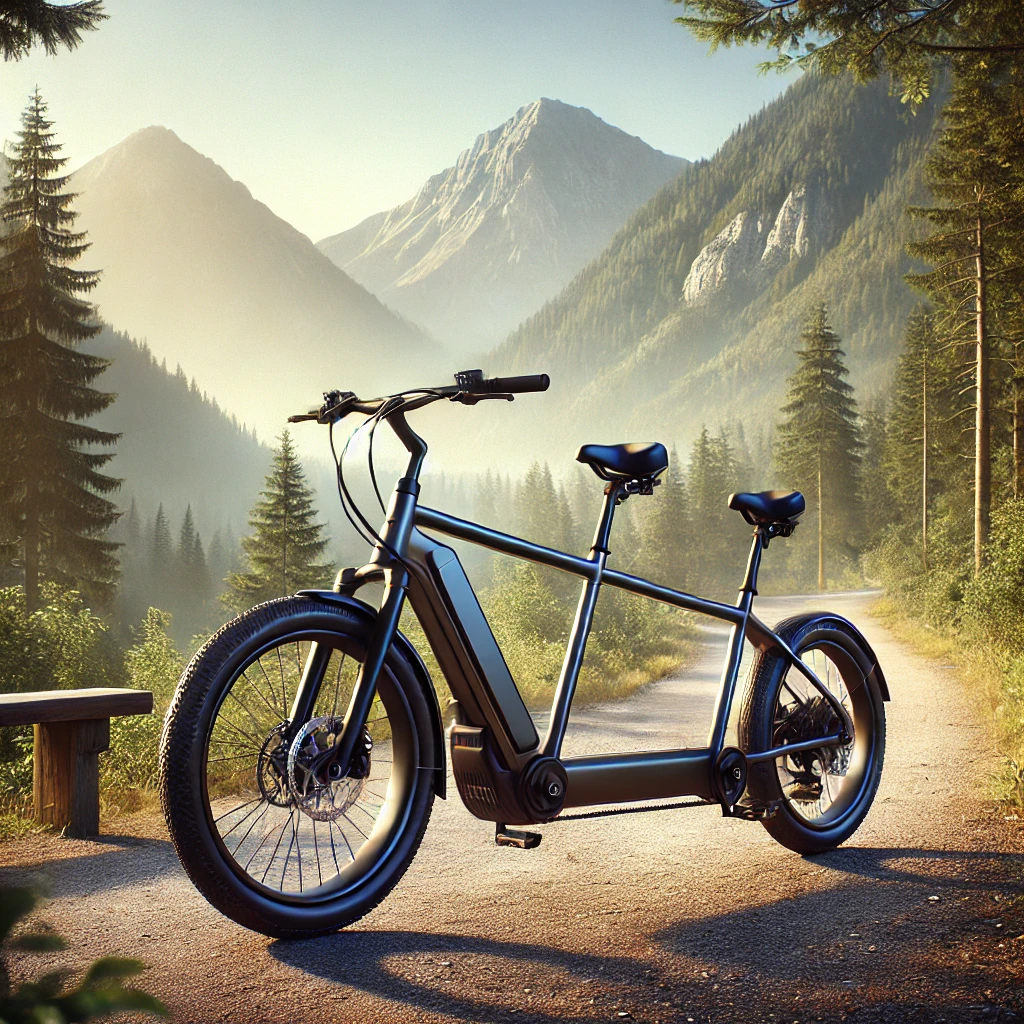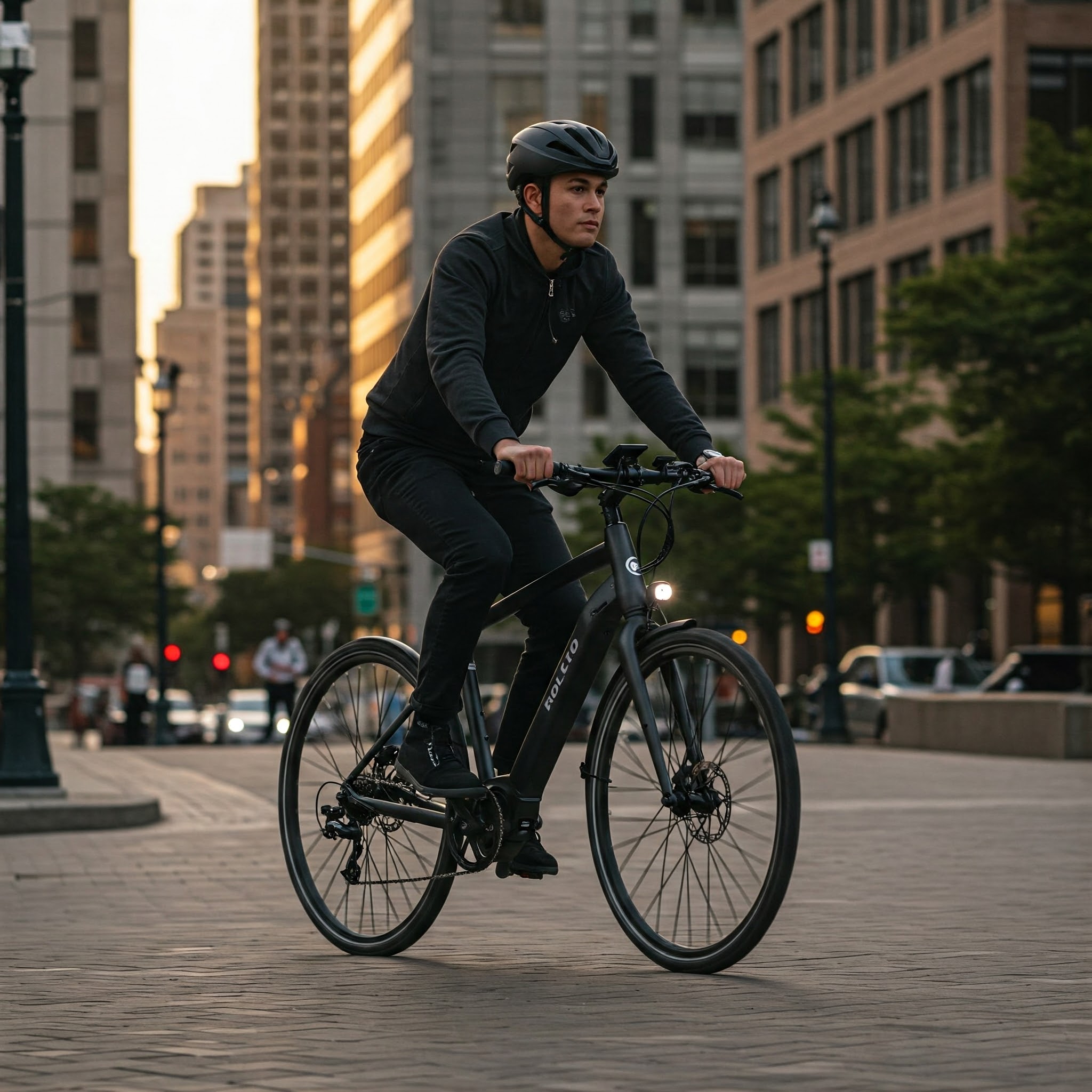Unleashing the Power of 750 Watt Electric Bikes
Are you looking to elevate your cycling experience with a powerful and efficient ride? A 750 watt electric bike might be exactly what you need to transform your daily commute or weekend adventures. These high-performance e-bikes offer impressive power, extended range, and versatility that make them increasingly popular among cycling enthusiasts and everyday commuters alike.
✨Was this helpful? Spread the word! 🚀
In the rapidly evolving world of electric bicycles, 750 watt electric bikes stand out for their perfect balance of power and practicality. With motor output that can handle steep hills, carry heavy loads, and reach impressive speeds, these e-bikes are changing how people think about transportation and recreation.
Throughout this comprehensive guide, we’ll explore everything you need to know about 750 watt ebikes, including their benefits, top models available in 2025, legal considerations, and tips for making the most of your investment. Whether you’re a seasoned rider looking to upgrade or a newcomer to the e-bike world, this article will help you navigate the exciting landscape of high-powered electric bicycles.
Understanding 750 Watt Electric Bikes: Power and Performance 🔋
What Makes a 750 Watt Electric Bike Special? ⚡
The defining feature of a 750 watt electric bike is, of course, its powerful motor. But what exactly does that 750w rating mean for your riding experience? Let’s break it down:
- Superior Power Output: A 750w electric bike can generate significantly more torque than lower-powered alternatives, allowing for quicker acceleration and better performance on challenging terrain.
- Impressive Hill-Climbing Ability: With 750 watts of power, these e-bikes can conquer steep inclines with ease, even when carrying extra cargo or a passenger.
- Higher Top Speeds: Many 750 watt ebikes can reach speeds of 20-28 mph (depending on local regulations), making them excellent for commuters who need to cover distance efficiently.
- Better Performance for Heavier Riders: The additional power makes these bikes more accommodating for riders of all sizes, ensuring consistent performance regardless of load.
According to a study by the Transportation Research Board, e-bikes with motors in the 750w range can reduce commute times by up to 35% compared to conventional bicycles while requiring significantly less physical exertion from the rider. This makes them particularly valuable for longer commutes or routes with challenging topography.
750w Ebike vs. Lower-Powered Alternatives
To truly appreciate what a 750 watt electric bike offers, it helps to compare it to the more common 250w and 500w options:
| Feature | 250 Watt E-Bike | 500 Watt E-Bike | 750 Watt Electric Bike |
|---|---|---|---|
| Hill Climbing Ability | Moderate | Good | Excellent |
| Top Speed (Average) | 15-18 mph | 18-22 mph | 20-28 mph |
| Acceleration | Modest | Good | Powerful |
| Ideal Terrain | Flat roads, mild hills | Mixed terrain | All terrain, including steep hills |
| Rider Weight Capacity | Lower | Medium | Higher |
| Battery Consumption | Lower | Medium | Higher |
| Typical Range | 40-60 miles | 35-55 miles | 30-50 miles |
| Cost Range | $800-$1,500 | $1,200-$2,500 | $1,800-$4,000+ |
💬 Just one click – help others make better buying decisions too!😊
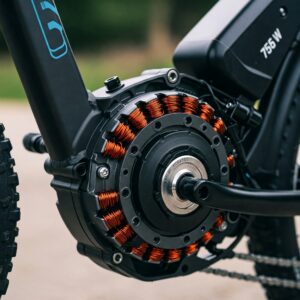
As you can see, the jump to a 750w electric bike represents a significant upgrade in performance capabilities, though it may come with trade-offs in terms of battery consumption and price.
Legal Considerations for 750 Watt Electric Bikes 📋
Before investing in a 750w ebike, it’s crucial to understand the legal framework governing these powerful machines in your area. In the United States, regulations vary by state and sometimes even by city.
Federal Classification System
Under federal law, electric bikes are classified into three categories:
✅ Class 1: Pedal-assist only (no throttle), with assistance stopping at 20 mph.
✅ Class 2: Throttle-assisted, with a maximum speed of 20 mph.
✅ Class 3: Pedal-assist only, with assistance up to 28 mph.
Most 750 watt electric bikes fall into Class 2 or Class 3, depending on their specific configuration. According to the U.S. Consumer Product Safety Commission, electric bicycles with motors up to 750 watts are considered bicycles for product safety regulations, which is why this power level has become a standard upper limit for many manufacturers.
❌ However, some states have their own restrictions that may limit legal operation to lower power levels or specific classes of e-bikes.
❌ Some municipalities may have additional restrictions on where higher-powered e-bikes can operate, particularly on dedicated bike paths or trails.
It’s always recommended to check with local transportation authorities before purchasing a 750w ebike to ensure it will be legal to operate in your area. The People for Bikes organization maintains an up-to-date database of e-bike regulations by state that can be a helpful resource.
Top 5 750 Watt Electric Bike Models for 2025 🚴♂️
The market for high-powered e-bikes has expanded dramatically in recent years, with manufacturers competing to offer the best combination of power, range, features, and value. Here are five standout 750 watt electric bike models worth considering in 2025:
1. Aventon Aventure.2 Fat Tire E-Bike
The Aventon Aventure.2 stands out as one of the most versatile 750w ebikes on the market. Built with adventure in mind, this fat tire e-bike can handle virtually any terrain you throw at it.
Key Features:
- Powerful 750W rear hub motor with 85 Nm of torque
- 48V 15Ah (720Wh) battery offering 45+ miles of range
- 4″ fat tires for excellent traction on sand, snow, and rough trails
- Integrated front and rear lights with brake activation
- Full-color LCD display with companion app connectivity
- Front suspension fork with 80mm of travel
- Available in multiple frame sizes and styles
The Aventure.2 has gained popularity among riders who want a single e-bike that can serve as both a reliable commuter and weekend adventure machine. Its fat tires and powerful motor make it exceptionally versatile, while thoughtful features like integrated lighting and fenders add practical value for everyday use.
2. Rad Power Bikes RadRover 6 Plus
Rad Power Bikes has built a reputation for delivering high-quality, affordable electric bikes, and their RadRover 6 Plus continues this tradition with impressive 750w performance.
Key Features:
- 750W geared hub motor with 5 levels of pedal assistance
- 48V 14Ah (672Wh) battery with 45+ mile range
- Custom 26″ x 4″ puncture-resistant fat tires
- Hydraulic disc brakes for reliable stopping power
- 7-speed Shimano drivetrain
- Integrated rear rack mounting points
- Semi-integrated battery design
As one of the pioneers in the direct-to-consumer e-bike market, Rad Power Bikes has refined their flagship fat tire model over multiple generations. The RadRover 6 Plus offers an excellent balance of power, comfort, and reliability at a price point that makes 750 watt ebike technology accessible to more riders.
3. Juiced Bikes RipCurrent S Step-Through
The RipCurrent S Step-Through from Juiced Bikes pushes the boundaries of what a 750w electric bike can offer with class-leading battery capacity and performance.
Key Features:
- 750W Bafang rear hub motor with 80 Nm of torque
- Massive 52V 19.2Ah (998Wh) battery for extended range
- 9-level pedal assist with cadence and torque sensing
- 26″ x 4″ all-terrain fat tires
- Step-through frame design for easy mounting
- Hydraulic disc brakes and suspension fork
- Bright LED headlight and integrated taillight
Juiced Bikes has earned a following among e-bike enthusiasts who want maximum performance from their rides. The RipCurrent S stands out for its enormous battery capacity, which can deliver up to 70+ miles of range on a single charge—perfect for longer commutes or multi-day adventures.
4. Specialized Turbo Vado 5.0 Step-Through
While technically a Class 3 pedal-assist bike, the Turbo Vado 5.0 from Specialized delivers 750 watts of peak power in a sleek, premium package designed for urban commuting.
Key Features:
- 750W peak custom-designed motor (nominal 250W for European compliance)
- 710Wh battery integrated into the downtube
- Smart control system that adapts power to riding conditions
- Full fenders, integrated lights, and rear rack
- Premium 10-speed Shimano drivetrain
- Hydraulic disc brakes with 4-piston calipers
- Intuitive display with smartphone connectivity
Specialized brings decades of cycling expertise to the e-bike market, and it shows in the refined design and performance of the Turbo Vado. Though more expensive than many direct-to-consumer options, the quality of components, sophisticated motor control, and dealer support network make it a compelling option for serious commuters.
5. Bakcou Mule Elite
For those looking for the ultimate off-road 750 watt electric bike, the Bakcou Mule Elite is purpose-built for hunting, fishing, and backcountry exploration.
Key Features:
- 750W Bafang Ultra mid-drive motor with 160 Nm of torque
- 48V 21Ah (1008Wh) battery for 40+ miles of range
- Ultra-wide 26″ x 4.8″ fat tires for extreme terrain
- Full suspension frame with adjustable front and rear travel
- 9-speed SRAM drivetrain optimized for off-road use
- 4-piston hydraulic brakes for confident stopping
- Optional hunting accessories including trailers and racks
While specialized for outdoor recreation, the Mule Elite demonstrates the versatility of the 750w ebike platform. Its mid-drive motor configuration delivers power directly through the bike’s gears, providing exceptional climbing ability and torque for challenging terrain—capabilities that distinguish higher-powered e-bikes from their lower-wattage counterparts.
💡 Don’t Miss These Exclusive Deals! 🌟
➡ Ready to experience the power and freedom of a 750 watt electric bike? We’ve researched the market to bring you these top-rated models at competitive prices. Click on any highlighted product to check current pricing and availability on Amazon. Your perfect ride is just a click away!
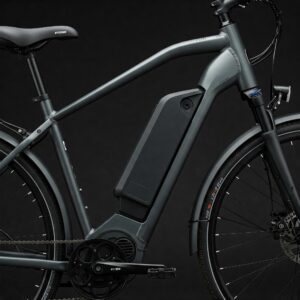
Key Components of a High-Quality 750 Watt Electric Bike 🛠️
When shopping for a 750w electric bike, understanding the key components that contribute to overall performance can help you make a more informed decision. Here’s what to look for:
Motor Types and Placement
There are two main motor configurations for 750 watt ebikes:
- Hub Motors: Integrated into either the front or (more commonly) rear wheel. These are typically simpler, more affordable, and require less maintenance. They work independently of the bike’s drivetrain.
- Mid-Drive Motors: Positioned at the bike’s bottom bracket, these motors drive the bike’s chain directly. This allows them to leverage the bike’s gearing system, providing better climbing ability and efficiency, particularly on varied terrain.
According to testing by the Electric Bike Review, mid-drive 750w electric bikes typically perform better on steep hills and technical terrain, while hub motors offer smoother acceleration on flat surfaces and may be more durable in the long run due to their simpler design.
Battery Technology and Capacity
The battery is a critical component of any e-bike, directly affecting its range and performance:
✅ Battery Chemistry: Most modern 750 watt ebikes use lithium-ion batteries, which offer excellent energy density, low memory effect, and long lifespan.
✅ Voltage: Higher voltage systems (48V-52V) are common on 750w electric bikes, allowing for more efficient power delivery and better performance.
✅ Capacity: Measured in watt-hours (Wh), capacity typically ranges from 500-1000Wh on premium models. A larger capacity battery will generally provide longer range.
✅ Battery Management System (BMS): Higher-quality e-bikes include sophisticated BMS technology to protect the battery, optimize performance, and extend lifespan.
The National Renewable Energy Laboratory suggests that modern e-bike batteries should maintain at least 80% of their original capacity after 500 charge cycles, which translates to several years of regular use for most riders.
Frame Design and Materials
The frame of a 750 watt electric bike needs to withstand greater forces than a conventional bicycle due to the higher speeds and additional weight:
- Aluminum Alloy: The most common material, offering a good balance of strength, weight, and cost.
- Carbon Fiber: Premium option that reduces weight while maintaining strength, but at a significantly higher price point.
- Steel: Less common but offers excellent durability and a smoother ride quality, at the cost of additional weight.
Frame geometry also matters—many 750w ebikes feature more relaxed, upright geometries that prioritize comfort and stability at higher speeds.
Braking Systems
With the increased speed potential of a 750 watt electric bike, high-quality brakes are non-negotiable:
✅ Hydraulic Disc Brakes: Offer the best stopping power and modulation, requiring less hand force to operate effectively.
✅ Mechanical Disc Brakes: More affordable alternative that still provides reliable stopping power, though they may require more maintenance.
❌ Rim Brakes: Generally not recommended for high-powered e-bikes due to their reduced effectiveness, especially in wet conditions.
Many premium 750w ebikes now include motor inhibitors that cut power when the brakes are applied, enhancing safety and control.
Maximizing Range on Your 750 Watt Electric Bike 🔋
One common concern with powerful e-bikes is battery range. While a 750w electric bike will typically consume more energy than lower-powered alternatives, several strategies can help maximize your riding distance:
Understanding Factors That Affect Range
The actual range you’ll get from your 750 watt ebike depends on numerous variables:
- Assistance Level: Higher assistance levels drastically reduce range. Many riders find that using a lower setting most of the time and only engaging full power when needed significantly extends battery life.
- Terrain: Hilly routes consume substantially more battery power. A study by Trek Bicycles found that climbing steep hills can use up to three times more battery power compared to flat terrain.
- Rider Weight and Cargo: Heavier loads require more power. Every additional 20 pounds can reduce range by approximately 5-10%.
- Tire Pressure: Underinflated tires increase rolling resistance. Maintaining optimal pressure (usually listed on the tire sidewall) can improve efficiency by 5-7%.
- Wind Conditions: Headwinds significantly increase power requirements. Planning routes with wind patterns in mind can help conserve battery life.
- Temperature: Battery performance decreases in cold weather. Below 32°F (0°C), range may be reduced by 20-30%.
Practical Tips for Extended Range
To get the most from your 750w ebike battery:
✅ Use Eco Mode: Save higher power modes for hills and headwinds.
✅ Pedal More Actively: Treat your e-bike as a partnership between human and electric power.
✅ Maintain Your Bike: Regularly check tire pressure, chain lubrication, and brake alignment.
✅ Plan Strategic Charging: For longer journeys, research charging opportunities along your route.
✅ Optimize Acceleration: Gradual acceleration uses less power than rapid starts.
✅ Carry a Second Battery: Many models allow for a backup battery if extra range is needed.
Real-World Range Expectations
Based on testing across multiple 750 watt electric bike models and riding conditions, here’s what you can realistically expect:
| Riding Condition | Typical Range (Low Assist) | Typical Range (Medium Assist) | Typical Range (High Assist) |
|---|---|---|---|
| Flat Terrain | 45-70 miles | 35-55 miles | 25-40 miles |
| Mixed Terrain | 35-60 miles | 25-45 miles | 20-35 miles |
| Hilly Terrain | 25-45 miles | 20-35 miles | 15-25 miles |
These figures assume a rider of average weight (170 lbs), moderate temperature (65-75°F), and a 750w ebike with a battery capacity around 700-800Wh.
💡 Don’t Miss These Exclusive Deals! 🌟
➡ Ready to experience the power and freedom of a 750 watt electric bike? We’ve researched the market to bring you these top-rated models at competitive prices. Click on any highlighted product to check current pricing and availability on Amazon. Your perfect ride is just a click away!

750 Watt Electric Bike Maintenance Essentials 🔧
Proper maintenance is crucial for keeping your high-powered e-bike running safely and efficiently. Here are the essential maintenance tasks specific to 750 watt electric bikes:
Regular Maintenance Schedule
Follow this schedule to keep your 750w electric bike in optimal condition:
Before Each Ride:
- Check tire pressure
- Verify that brakes are working properly
- Ensure all bolts and quick-releases are secure
- Confirm battery charge level
Weekly:
- Clean and lubricate chain
- Inspect tires for wear and damage
- Check brake pad wear
- Clean display and control surfaces
Monthly:
- Inspect all electrical connections
- Check spoke tension
- Examine frame for any cracks or damage
- Clean and protect battery contacts
Every 500 Miles or 3 Months:
- Professional inspection of motor system
- Brake adjustment or replacement as needed
- Derailleur adjustment
- Comprehensive safety check
Special Considerations for 750W Systems
The higher power output of a 750 watt ebike creates additional maintenance concerns:
✅ Brake Wear: The increased speed and weight mean brakes wear faster. Inspect pads monthly and replace when they reach 1.5mm thickness.
✅ Chain and Drivetrain: The additional torque accelerates wear on drivetrain components. Use a high-quality lubricant designed for e-bikes and consider upgrading to more durable chains and cassettes.
✅ Electrical Connections: Vibration from powerful motors can loosen connections over time. Periodically check all wiring for secure connections and signs of wear.
✅ Motor Cooling: 750w motors generate more heat. Ensure motor vents remain clean and unobstructed to prevent overheating.
According to a maintenance survey by Bosch eBike Systems, e-bikes with regular maintenance had 78% fewer critical failures and retained 23% more battery capacity after three years compared to those with neglected maintenance.
DIY vs. Professional Service
While many maintenance tasks can be performed at home, others require specialized knowledge and tools:
DIY-Friendly Tasks:
- Basic cleaning and lubrication
- Tire pressure and replacement
- Basic brake adjustments
- Battery care and charging
Professional Service Recommended:
- Motor diagnostics and internal service
- Battery management system checks
- Complex electrical issues
- Hydraulic brake bleeding
A professional tune-up for a 750 watt electric bike typically costs between $75-150, depending on your location and the specific services performed. Many shops offer maintenance packages that include regular check-ups at a discounted rate.
How to Choose the Right 750 Watt Electric Bike for Your Needs 🔍
With so many options available, selecting the perfect 750w ebike requires considering your specific needs and preferences:
Assessing Your Riding Style and Terrain
Start by honestly evaluating how and where you’ll primarily use your e-bike:
- Urban Commuting: Look for models with integrated lights, fenders, and racks. Prioritize maneuverability and comfort features like suspension seatposts.
- Trail Riding: Consider full-suspension models with fat tires and more aggressive geometry. Battery range becomes more critical when riding off-grid.
- Long-Distance Touring: Prioritize comfort, reliable components, and maximum battery capacity. Consider models that accept a second battery.
- Cargo Hauling: Focus on sturdy frames, powerful mid-drive motors, and lower gearing for better torque when carrying heavy loads.
Budget Considerations and Value Assessment
750 watt electric bikes vary dramatically in price, from around $1,500 for basic models to $8,000+ for premium offerings. Consider these price tiers:
Entry-Level ($1,500-$2,200):
- Reliable but basic components
- Typically hub motors with simpler control systems
- Limited warranty coverage (usually 1 year)
- Fewer integrated features
Mid-Range ($2,200-$3,500):
- Higher quality components throughout
- Often feature more sophisticated motor systems
- Better battery management and range
- Improved warranty coverage (1-2 years)
- More integrated features like lights and racks
Premium ($3,500+):
- Top-tier components and specialized designs
- Advanced motor control systems
- Superior battery technology and range
- Comprehensive warranty coverage (2-5 years)
- Full integration of all features and accessories
According to consumer satisfaction surveys by Electric Bike Report, riders who invested in mid-range models reported the highest overall satisfaction, suggesting this range offers the best balance of quality and value for most users.
Test Riding and Evaluation
Whenever possible, test ride several different 750 watt ebike models before making a decision. Pay attention to:
✅ Motor Responsiveness: How quickly does the assistance engage? Is it smooth or jerky?
✅ Handling Characteristics: Does the bike feel stable at higher speeds? How does it handle corners?
✅ Comfort: Is the riding position comfortable for your body? How does it feel after 30+ minutes?
✅ Noise Level: Some motors are significantly quieter than others. Is the sound level acceptable to you?
✅ Control Interface: Is the display easy to read? Are the controls intuitive to operate while riding?
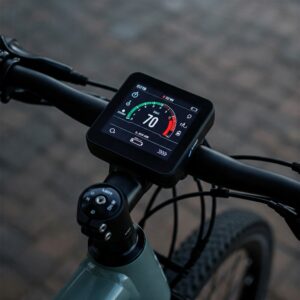
Best 750 Watt Electric Bike Accessories to Enhance Your Ride 🎒
The right accessories can significantly improve your e-bike experience. Here are some particularly valuable additions for 750 watt electric bike owners:
Security Solutions
With 750w ebikes representing a significant investment (often $2,000+), security should be a priority:
- Kryptonite New York Fahgettaboudit Chain 1415 is a premium security option that provides best-in-class protection with its 14mm manganese steel links and disc-style cylinder lock. While heavier than many alternatives, it offers peace of mind for urban parking situations.
- GPS Trackers: Devices like the Boomerang CycloTrac offer real-time tracking, motion alerts, and crash detection.
- Secure Storage Solutions: Consider options like the Velosurance e-bike insurance policy, which provides coverage against theft and damage.
Range Extenders and Power Management
For maximizing the capabilities of your 750 watt electric bike:
- Auxiliary Batteries: Models like the Aventon Aventure and Rad Power Bikes RadRover offer compatible auxiliary batteries that can nearly double your range.
- Solar Charging Systems: Portable panels like the BigBlue 28W Solar Charger can provide supplementary charging during extended trips.
- High-Efficiency Chargers: Upgraded chargers such as the Juiced Bikes Advanced 52V 4A Charger can reduce charging time by up to 40%.
Comfort and Convenience Upgrades
For a better overall riding experience:
- Suspension Seatposts: The Kinekt 2.1 Suspension Seatpost provides 35mm of travel to absorb road shock, particularly valuable when riding at higher speeds.
- Ergonomic Grips: Products like Ergon GP5 Grips reduce hand fatigue and numbness during longer rides.
- Upgraded Saddles: A quality saddle such as the Brooks B17 can dramatically improve comfort for longer journeys.
Cargo and Utility Enhancements
To maximize the practicality of your 750w ebike:
- Pannier Systems: Waterproof options like Ortlieb Back-Roller Classic Panniers provide 40L of secure storage.
- Front Baskets: Quick-release systems like the Wald 1372 Basket offer convenient storage for everyday items.
- Trailer Options: For serious hauling capacity, the Burley Flatbed Trailer can handle up to 100 pounds of cargo.
750 Watt Electric Bike Riding Techniques for Safety and Efficiency 🛣️
The additional speed and power of a 750w electric bike requires adapting your riding techniques for both safety and efficiency:
Mastering Power Management
Learning to work with your e-bike’s motor rather than relying on it completely will improve both safety and range:
✅ Progressive Assistance: Start in lower power modes and increase assistance only when needed for hills or headwinds.
✅ Anticipatory Riding: Look ahead and reduce power before stops rather than riding at full assistance until the last moment.
✅ Cadence Awareness: Most e-bike motors operate most efficiently at cadences between 70-90 RPM. Practice maintaining this pedaling rate.
✅ Throttle Discipline: If your 750 watt ebike has a throttle, use it judiciously. Constant full-throttle operation drains batteries quickly and can strain motor components.
Safety Considerations at Higher Speeds
The potential for higher speeds on a 750w electric bike comes with additional safety responsibilities:
✅ Increased Stopping Distance: Practice emergency stops to develop muscle memory and understanding of braking distances at various speeds.
✅ Defensive Positioning: Take the full lane when necessary for visibility, particularly at speeds approaching that of vehicle traffic.
✅ Speed-Appropriate Gear: Consider cycling-specific eyewear, gloves, and possibly increased protection for commuting at higher speeds.
✅ Visibility Equipment: With greater speed comes greater need for visibility. Invest in high-quality front and rear lights, even for daytime riding.
According to data from the National Highway Traffic Safety Administration, e-bike riders who regularly practice emergency maneuvers and maintain their equipment have a 60% lower accident rate than those who don’t.
Group Riding Protocols
When riding with others, especially those on conventional bicycles:
- Communicate Your Approach: Call out “on your left” earlier than you might on a regular bike due to your higher potential speed.
- Modulate Your Assistance: Consider riding in a lower power mode to match the pace of traditional cyclists.
- Take Longer Pulls: When taking turns at the front of a group, e-bike riders can take longer pulls to compensate for their assistance.
- Mind the Draft: Be aware that your wake at higher speeds can be disruptive to following cyclists. Maintain steady power and avoid sudden acceleration changes.
The Future of 750 Watt Electric Bikes: Trends and Innovations 🔮
The e-bike industry continues to evolve rapidly, with several exciting trends on the horizon for high-powered models:
Technological Advances
Emerging technologies are set to make 750w ebikes even more capable and user-friendly:
- Integrated ABS Systems: Companies like Bosch are developing anti-lock braking systems specifically for e-bikes, improving safety at higher speeds.
- Automatic Transmission Systems: Electronic shifting that automatically selects the optimal gear based on speed, cadence, and motor output.
- Advanced Motor Control: Artificial intelligence-driven power delivery that learns rider preferences and adapts to different situations.
- Regenerative Braking: While currently limited in effectiveness, improved systems could extend range by recovering energy during deceleration.
According to industry analysts at Deloitte, these technological improvements could increase e-bike adoption rates by an additional 15-20% over the next five years.
Regulatory Evolution
As 750 watt electric bikes become more common, regulatory frameworks are adapting:
- Standardized Classification: More regions are adopting the three-class system, creating clearer guidelines for manufacturers and riders.
- Infrastructure Development: Cities are increasingly designing bike lanes and paths with e-bikes in mind, including wider lanes and adapted signals.
- Insurance Programs: Specialized e-bike insurance offerings are becoming more common, with coverage tailored to the unique risks and values of high-powered e-bikes.
Environmental Impact
The sustainability profile of e-bikes continues to improve:
- Battery Recycling: Programs like Call2Recycle are expanding their capacity to process e-bike batteries responsibly.
- Carbon Footprint Reduction: A study from the European Cyclists’ Federation found that e-bikes produce just 2-5% of the CO2 per passenger-mile compared to cars, even accounting for battery production.
- Solar Integration: Some manufacturers are exploring direct solar charging options to further reduce the environmental impact of charging.
Comparing 750 Watt Electric Bikes to Other Transportation Options 🚗
To truly understand the value proposition of a 750w electric bike, it helps to compare it to other transportation alternatives:
Cost Comparison Over 5 Years
| Transportation Method | Initial Cost | 5-Year Operating Cost | Total 5-Year Cost |
|---|---|---|---|
| 750 Watt Electric Bike | $2,500 | $1,000 (electricity, maintenance, accessories) | $3,500 |
| Public Transit | $0 | $5,000 ($1,000/year for passes) | $5,000 |
| Used Car | $8,000 | $17,500 (fuel, insurance, maintenance, parking) | $25,500 |
| New Car | $25,000 | $22,500 (fuel, insurance, maintenance, parking) | $47,500 |
| Rideshare Services | $0 | $32,500 ($6,500/year for regular use) | $32,500 |
💡 Don’t Miss These Exclusive Deals! 🌟
➡ Ready to experience the power and freedom of a 750 watt electric bike? We’ve researched the market to bring you these top-rated models at competitive prices. Click on any highlighted product to check current pricing and availability on Amazon. Your perfect ride is just a click away!
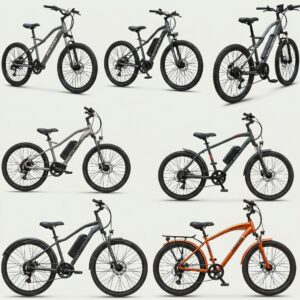
These figures assume typical urban use patterns and average costs across the United States. The economic advantage of e-bikes becomes particularly clear when considering the full cost of ownership.
Environmental Impact
According to the Union of Concerned Scientists, transportation modes compare as follows for carbon emissions:
- 750 Watt Electric Bike: Approximately 4-8g CO2 per passenger-mile
- Bus (Average Occupancy): 60g CO2 per passenger-mile
- Train (Average Occupancy): 40g CO2 per passenger-mile
- Average Car (Single Occupant): 404g CO2 per passenger-mile
Even accounting for battery production and electricity generation, e-bikes remain by far the most environmentally friendly motorized transport option.
Time Efficiency in Urban Environments
A study by the Institute for Transportation & Development Policy found that in congested urban areas:
- 750w Ebikes: Average 15 mph door-to-door speed
- Cars: Average 11 mph door-to-door speed (including parking)
- Public Transit: Average 8 mph door-to-door speed (including waiting and transfers)
- Walking: Average 3 mph door-to-door speed
The study concluded that for trips under 6 miles in urban environments, e-bikes consistently offered the fastest door-to-door travel times.
Health Benefits
Despite the electric assistance, 750 watt electric bikes still provide significant health benefits:
- A study in the Transportation Research Journal found that e-bike commuters received about 80% of the cardiovascular benefit of conventional cycling.
- E-bike users typically ride more frequently and for longer distances than conventional cyclists, potentially resulting in greater cumulative exercise.
- The reduced intensity makes cycling accessible to those with physical limitations that might prevent them from using conventional bicycles.
How to Finance Your 750 Watt Electric Bike Purchase 💰
Given the significant investment a quality 750w ebike represents, many buyers explore financing options:
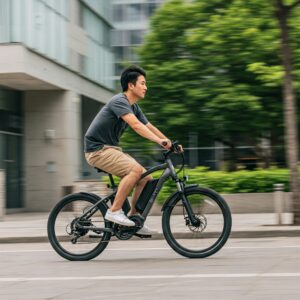
Manufacturer Financing Programs
Many major e-bike companies now offer in-house financing options:
- Rad Power Bikes partners with Affirm to offer terms from 6-36 months with rates starting at 0% APR for qualified buyers.
- Aventon provides financing through Affirm with similar terms, allowing payments to be spread out over time.
- Specialized offers financing through their Specialized Credit Card, including promotional 0% APR periods for qualified customers.
- Trek has their own Trek Card financing program with promotional offers throughout the year.
Alternative Financing Options
If manufacturer financing isn’t available or doesn’t offer the best terms, consider these alternatives:
- Personal Loans: Credit unions often offer competitive rates on personal loans that can be used for e-bike purchases.
- Credit Cards with 0% Intro APR: Many credit cards offer introductory 0% APR periods of 12-18 months, which can be an effective interest-free loan if paid off within that timeframe.
- Bicycle-Specific Loans: Some financial institutions offer loans specifically designed for bicycle purchases, sometimes with better terms than general personal loans.
- Employer Benefits: An increasing number of employers offer commuter benefits or wellness programs that can subsidize e-bike purchases. Check with your HR department.
According to research by the National Bicycle Dealers Association, approximately 35% of e-bikes priced over $2,000 are purchased using some form of financing, with the average financed amount being around $2,800.
Tax Incentives and Rebates
Don’t overlook potential savings through government programs:
✅ Federal Tax Credits: Legislation has been proposed (though not yet passed at the federal level) to provide tax credits for e-bike purchases.
✅ State Incentive Programs: Several states including California, Colorado, and Vermont offer rebate programs for e-bike purchases, typically ranging from $200-$1,500.
✅ Local Utility Rebates: Some utility companies offer rebates for e-bikes as part of their clean transportation initiatives.
✅ Employer Pre-Tax Benefits: Some employers allow the use of commuter benefits pre-tax dollars for e-bike expenses.
The website BikeToWorkDay.us maintains an updated database of e-bike incentive programs across the United States that can help identify available programs in your area.
Customizing Your 750 Watt Electric Bike for Optimal Performance 🛠️
One of the advantages of investing in a quality 750w ebike is the potential for customization to better suit your specific needs:
Performance Upgrades
These modifications can enhance your riding experience:
- Upgraded Tires: Switching to premium tires like Schwalbe Marathon Plus can improve range by reducing rolling resistance while enhancing puncture protection.
- Belt Drive Conversion: Some models can be converted from chain to belt drives, offering quieter operation and reduced maintenance.
- Suspension Upgrades: Aftermarket suspension components from brands like Fox or RockShox can dramatically improve comfort and control, especially for off-road riding.
- Brake Enhancements: Upgrading to 4-piston calipers and larger rotors can provide more confident stopping power at higher speeds.
Comfort Modifications
For enhanced riding comfort:
- Ergonomic Contact Points: Upgraded saddles, grips, and pedals can significantly improve comfort, especially on longer rides.
- Suspension Seatposts: Products like the Redshift ShockStop or Kinekt posts can reduce fatigue on rough roads.
- Handlebar Adjustments: Exploring different rise, sweep, and width options can improve control and reduce strain.
- Wind Protection: For commuters, compact windscreens can reduce fatigue caused by constant wind resistance at higher speeds.
Practical Add-ons
To make your 750 watt electric bike more functional for daily use:
- Extended Range Solutions: Secondary battery systems or range extenders can nearly double your riding distance.
- Integrated Security: Built-in alarm systems and GPS trackers provide peace of mind when parking in urban areas.
- All-Weather Equipment: Fenders, chain guards, and weather-resistant storage help make your e-bike a true car replacement in all conditions.
- Smart Connectivity: Aftermarket displays and connectivity modules can add navigation, fitness tracking, and advanced motor control options.
Real User Experiences: Living with a 750 Watt Electric Bike 👨👩👧👦
To provide deeper insight into the ownership experience, let’s look at how different types of riders are using their 750w electric bikes:
The Urban Commuter
Sarah, a 38-year-old marketing executive in Chicago, replaced her car with a RadCity 5 Plus featuring a 750 watt motor:
“I was spending nearly $400 monthly between car payments, insurance, parking, and gas. My 750w ebike paid for itself in less than 8 months. My 12-mile round-trip commute takes about the same time as driving during rush hour, but I arrive energized instead of stressed. Even in Chicago winters, I ride about 3 days a week with the right gear. The powerful motor handles headwinds and hills with ease, and I can carry a week’s worth of groceries in the panniers.”
Sarah reports averaging 28 miles per charge in mixed city conditions, and appreciates the integrated lights and fenders for practical daily use. Her annual maintenance costs average about $150.
The Recreational Rider
Michael, a 65-year-old retiree in San Diego, uses his Aventon Aventure 750w ebike to stay active:
“Before getting my e-bike, I’d stopped cycling entirely because the hills in my neighborhood were too challenging for my knees. The 750 watt motor gives me just enough assistance to make cycling enjoyable again. I’ve put over 2,000 miles on it in the first year, exploring trails and paths I never would have attempted on a regular bike. The fat tires provide confidence on varied terrain, and the battery easily lasts for my typical 25-35 mile rides.”
Michael notes that the e-bike has helped him lose 22 pounds and improve his cardiovascular health according to his doctor. He particularly values the stable handling and confidence the powerful motor provides on steep climbs.
The Family Solution
The Rodriguez family in Portland replaced their second car with a Tern GSD S10 LX cargo e-bike with a 750w electric motor:
“With two kids aged 6 and 8, we were constantly making short trips around the neighborhood. The cargo e-bike has transformed these journeys into fun family adventures rather than car-bound errands. School drop-offs, grocery runs, and weekend outings are all easier on the e-bike—no parking hassles, no traffic stress, and the kids actually prefer it to the car. The powerful motor handles the weight of both children plus groceries, even on Portland’s hills.”
The family reports saving approximately $4,200 annually by eliminating their second car, while building physical activity into their daily routines. They use their cargo e-bike year-round with appropriate weather gear, only falling back to their remaining car during extreme weather.
The Rural Adventurer
James, a 42-year-old photographer in rural Colorado, uses his Bakcou Mule 750w ebike to access remote locations:
“I photograph wildlife and landscapes in areas that are often miles from the nearest road. Before the e-bike, I was limited by how far I could hike with my equipment. Now, I can cover 20-30 miles in a day on forest service roads and moderate trails, carrying all my camera gear and supplies. The powerful motor and fat tires handle rough terrain beautifully, and I can approach wildlife more quietly than with a motorized vehicle.”
James emphasizes the importance of responsible trail use and following local regulations for motorized access. He carries a spare battery for extended trips and has equipped his bike with specialized bags for camera equipment.
Answers to Common Questions About 750 Watt Electric Bikes ❓
Are 750 Watt Electric Bikes Legal Everywhere?
No, regulations vary significantly by location. In the United States, federal law limits e-bikes to 750 watts and 20mph (with pedal assistance up to 28mph for Class 3), but state and local laws may impose different restrictions. In the European Union, legal limits are generally lower (250W nominal power), though actual enforcement varies. Always check local regulations before purchasing.
How Fast Can a 750 Watt Electric Bike Go?
Most 750w ebikes are limited by their controllers to 20mph (32km/h) with throttle operation and 28mph (45km/h) with pedal assistance, in accordance with U.S. federal regulations for Class 2 and Class 3 e-bikes respectively. Without these limitations, a 750 watt electric bike could potentially reach higher speeds, but manufacturers implement these restrictions for legal compliance and safety.
How Long Do 750W Ebike Batteries Last?
Modern lithium-ion batteries typically last 500-1000 full charge cycles before dropping below 80% of their original capacity. For most riders, this translates to 3-5 years of regular use. Proper care can extend battery life, including avoiding extreme temperatures, storing at 40-80% charge when not in use for extended periods, and avoiding frequent complete discharges.
Can I Ride a 750W Electric Bike in the Rain?
Most quality 750 watt ebikes have water-resistant electronics with IP ratings that can handle light to moderate rain. However, submersion or prolonged exposure to heavy rain should be avoided. After riding in wet conditions, it’s advisable to dry the bike and particularly the electrical components. Check your specific model’s IP rating and manufacturer recommendations.
Do I Need a License to Ride a 750 Watt Electric Bike?
In most U.S. states, no license is required for properly classified e-bikes (including 750w models) that comply with the three-class system. However, some states and many countries have different requirements. In some jurisdictions, higher-powered e-bikes may be classified more like mopeds or motorcycles, requiring registration and licensing.
How Much Does it Cost to Charge a 750W Ebike?
Based on the national average electricity cost of approximately $0.15 per kilowatt-hour in the U.S., charging a typical 750 watt electric bike battery (around 700Wh) costs about $0.10-0.15 per full charge. This translates to roughly $0.003-0.005 per mile, making it one of the most economical powered transportation options available.
Can a 750 Watt Electric Bike Climb Any Hill?
While a 750w ebike provides excellent climbing ability compared to lower-powered alternatives, extremely steep hills may still present challenges, especially for heavier riders. Factors affecting climbing performance include:
- Motor type (mid-drive generally climbs better than hub motors)
- Battery voltage (higher voltage systems perform better on hills)
- Rider weight and cargo
- Tire tread and pressure
- Gearing options
Most quality 750 watt electric bikes can handle grades up to 15-20% with proper gearing and rider input.
💡 Don’t Miss These Exclusive Deals! 🌟
➡ Ready to experience the power and freedom of a 750 watt electric bike? We’ve researched the market to bring you these top-rated models at competitive prices. Click on any highlighted product to check current pricing and availability on Amazon. Your perfect ride is just a click away!
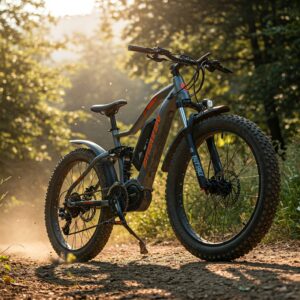
Conclusion: Is a 750 Watt Electric Bike Right for You? 🏁
After exploring the many aspects of 750w ebikes, you may be wondering if this powerful option is the right choice for your specific situation. Here’s a summary to help you decide:
Ideal Use Cases for 750W Electric Bikes
A 750 watt electric bike is likely an excellent choice if:
✅ You have challenging terrain to navigate, including steep hills or off-road trails.
✅ You’re a heavier rider who needs more power for comfortable assistance.
✅ You regularly carry cargo or passengers that add significant weight.
✅ You want to replace car trips for commuting, errands, and daily transportation.
✅ You value having power in reserve for headwinds, long rides, or varying conditions.
Situations Where Lower Power Might Suffice
A 250W or 500W e-bike might be more appropriate if:
❌ You ride primarily on flat terrain with few challenging hills.
❌ Legal restrictions in your area limit e-bikes to lower power ratings.
❌ You’re seeking maximum range rather than maximum power.
❌ Weight is a primary concern, as lower-powered e-bikes are often lighter.
❌ Your budget is limited, as lower-powered models typically cost less.
Final Thoughts
The 750 watt electric bike represents a sweet spot in the e-bike market for many riders—powerful enough to handle demanding conditions while remaining legally classified as a bicycle in many jurisdictions. As technology continues to advance, these bikes are becoming more refined, efficient, and capable.
Whether you’re looking to extend your cycling range, conquer challenging terrain, replace car trips, or simply enjoy the ride with less effort, a quality 750w ebike can transform your relationship with cycling and transportation. The initial investment, while significant, often pays dividends in terms of health benefits, environmental impact, and long-term cost savings.
More FAQs
❓ How fast can a 750 watt electric bike legally go?
✅ In the United States, 750 watt electric bikes are typically limited to 20 mph (32 km/h) with throttle-only operation and up to 28 mph (45 km/h) with pedal assistance, depending on their classification. These limits vary by country and local regulations...
❓ What's the average range of a 750w ebike on a single charge?
✅ Most 750 watt electric bikes offer 30-50 miles (48-80 km) of range on a single charge. Actual range depends on factors like terrain, rider weight, assistance level, and weather conditions. Some premium models with larger batteries can achieve 70+ miles...
❓ Are 750 watt electric bikes worth the extra cost over 500W models?
✅ For riders tackling hills, carrying cargo, or weighing over 200 lbs, the upgrade to a 750w electric bike is often worthwhile. The additional power provides better hill climbing, more consistent performance, and greater headroom for challenging conditions...
❓ How long does a 750 watt ebike battery typically last before needing replacement?
✅ Quality lithium-ion batteries on 750w ebikes typically last 3-5 years or 500-1000 charge cycles before dropping below 80% capacity. Proper care can extend this lifespan, including avoiding extreme temperatures and maintaining proper charging habits...
❓ Can I upgrade my existing e-bike to a 750 watt motor?
✅ While technically possible in some cases, upgrading to a 750w motor often requires replacing multiple components including the controller, display, battery, and potentially the frame. For most bikes, a complete upgrade is complex and may cost more than purchasing a new purpose-built 750 watt electric bike...
Recommended for You:
- 7 Stunning Cafe Racer Ebike Models That Will Turn Heads in 2025
- 10 Incredible Dragster Ebike Models That Will Transform Your Ride in 2025
- The Ultimate Guide to Mid Drive Ebike Kit Selection: Powerfully Transform Your Bicycle and Conquer 2025
Disclaimer: This article contains affiliate links. If you purchase products through these links, we may earn a small commission at no additional cost to you.
✨ Found this helpful? Share it with your friends! 💬🤗

